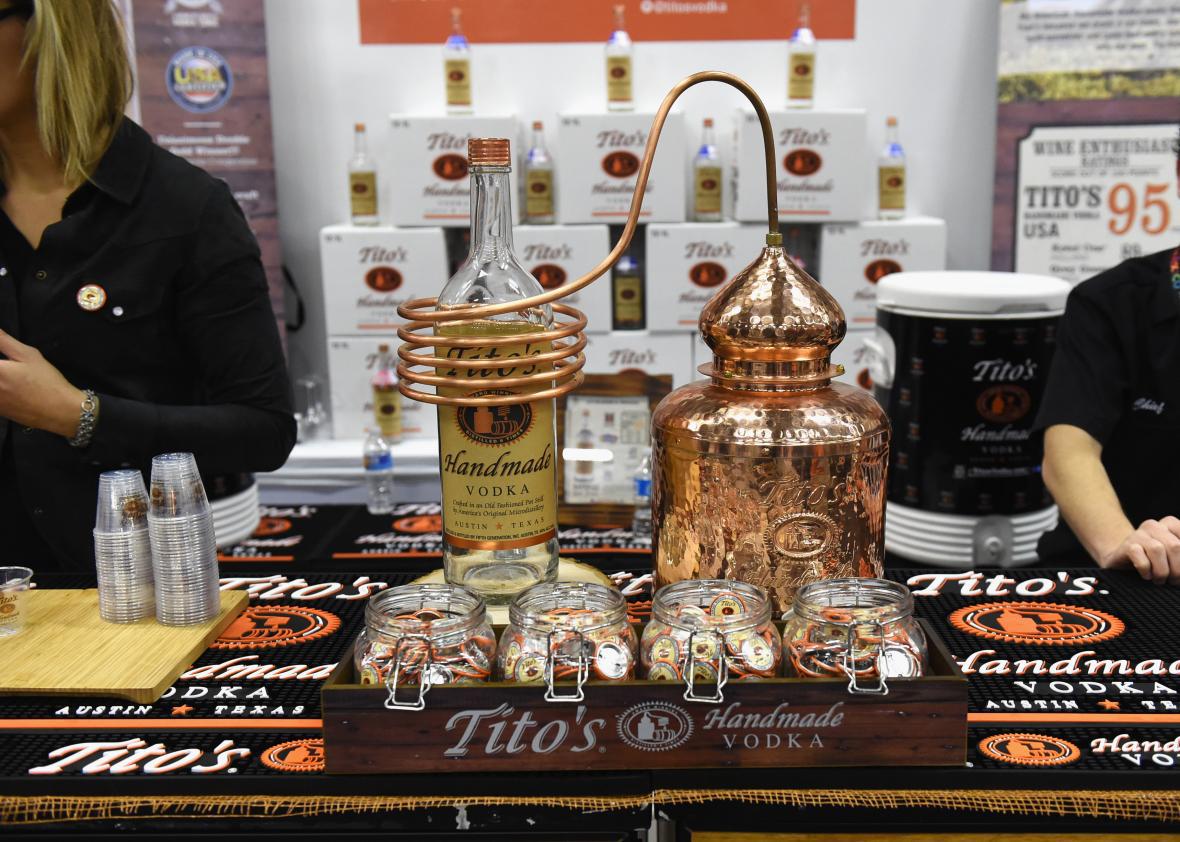The vodka business is a wonderful testament to the brute power of consumer marketing. By federal dictate, America’s best-selling liquor is required to be a neutral spirit, “without distinctive character, aroma, taste, or color”—which is to say, flavorless alcohol that will slip unobtrusively into your Bloody Mary at brunch. And while aficionados might be able to pick out the typically subtle differences between brands when drinking it straight from a frosted shot glass or on the rocks, the nuances tend to be lost on tipplers who’ve doused their vodka with tonic water or cranberry juice. Thus, purveyors tend to spend a lot of energy thinking about things like advertising and elaborate bottles that at the extreme end can start looking like pieces of modern sculpture; one brand famously went so far as to commission starchitect Frank Gehry for a design.
Which is what makes the predicament faced by some of the industry’s titans sort of amusing. Big vodka, Bloomberg reports, is dealing with its own version of the craft revolution that has troubled large beer brewers. Much like beer, total vodka sales have flat-lined in the United States as more drinkers embrace whiskey, and the top distillers—Smirnoff and Absolut, which together claim about one fifth of the $18 billion market—are losing ground to smaller rivals. In particular, they’ve been beset by Tito’s Handmade Vodka, made by Fifth Generation in Texas, and New Amsterdam, produced by E&J Gallo Winery in California, whose combined sales passed Absolut’s volume in 2014.
New Amsterdam doesn’t sell itself as particularly artisanal. But Tito’s does, with a label proudly proclaiming that it is “crafted in an old-fashioned pot-still by America’s original microdistillery.” Some buyers have been disappointed to find that this is more a description of the booze’s roots than of its present-day production process. Tito’s hit the market in 1997 when it was still a scrappy, small-scale operation, but by 2013 Forbes reported that it had grown into a “26-acre operation that produced 850,000 cases last year” in “massive buildings containing ten floor-to-ceiling stills and bottling 500 cases an hour.” Angry (or opportunistic) drinkers later filed class-action suits claiming that the company had misled consumers with its packaging. A judge in one of the cases recently dismissed most, though not all, of the claims (whether the vodka can fairly be said to be “crafted in in old-fashioned pot-still” is still up for legal dispute), but the idea that Tito’s is still a homespun upstart should be good and dead by now. Like most vodka makers, the suits allege, the company simply buys neutral grain spirits in bulk from a commercial manufacturer, then distills them again at its own high-tech facilities to finish the product.
The ironic thing about the Tito’s controversy is that there isn’t much reason to care about whether a Vodka is made in small batches or at Smirnoff-esque volume. With complicated spirits like bourbon or gin, the sensibilities of an individual distiller often make an enormous amount of difference in the product, and small-batch producers are free to experiment and crank out a truly unique product that might not be replicable (or marketable) on a mass scale. With something as indistinct as vodka, where consistency and price are basically the name of the game for most buyers, highly professional mass production may actually be a plus.
Still, the rise of Tito’s and other small distillers has inspired some piggy-backing by the big players (one is reminded of Bud Light’s newly retro beer can). Absolut, for instance, changed its bottle for the first time since it hit shelves in 1979; it now informs shoppers that Absolut is “crafted in the village of Ahus, Sweden.” As if anybody should care.
